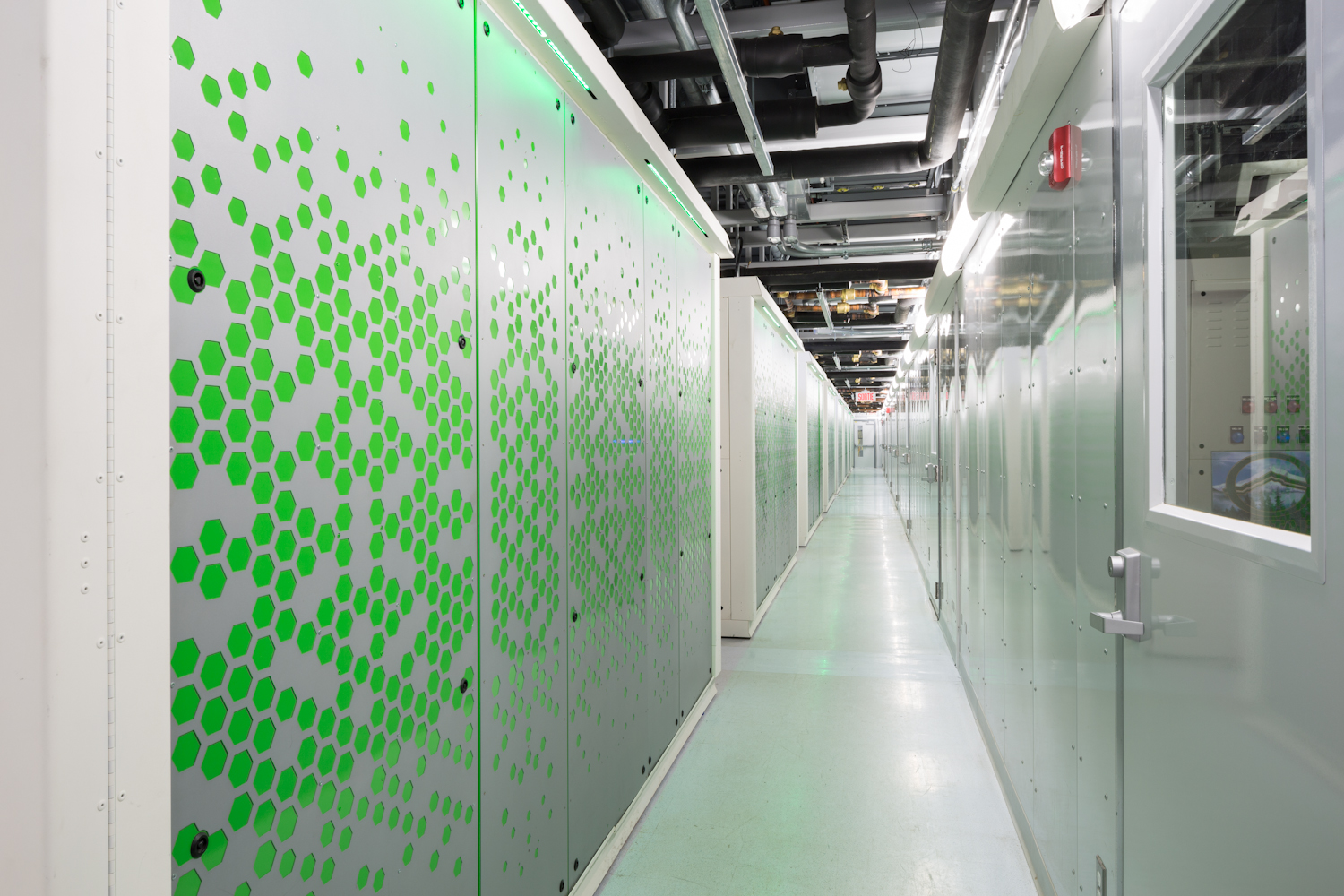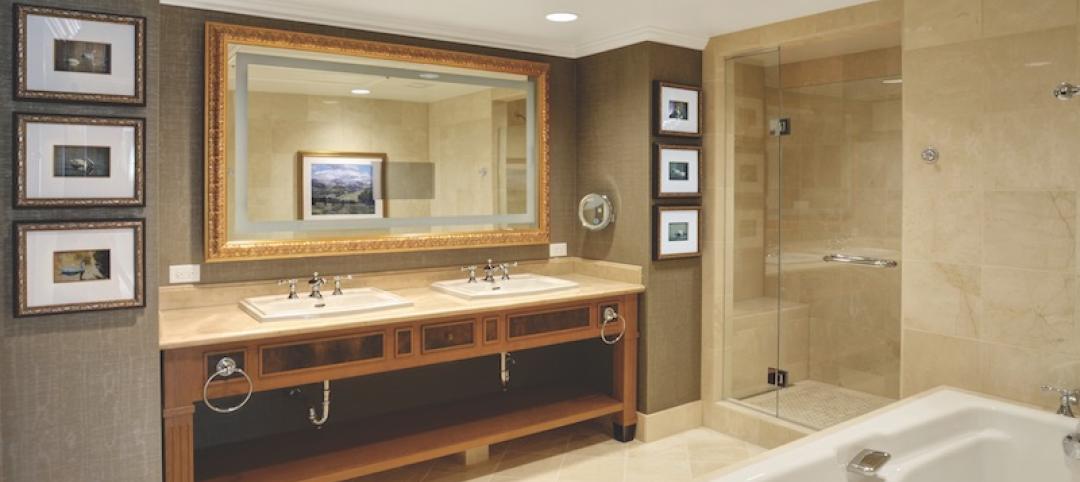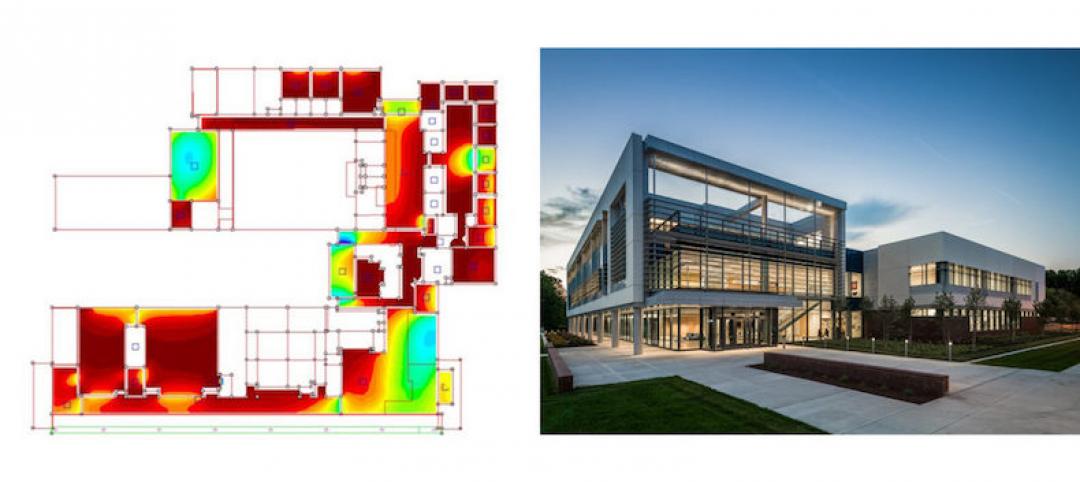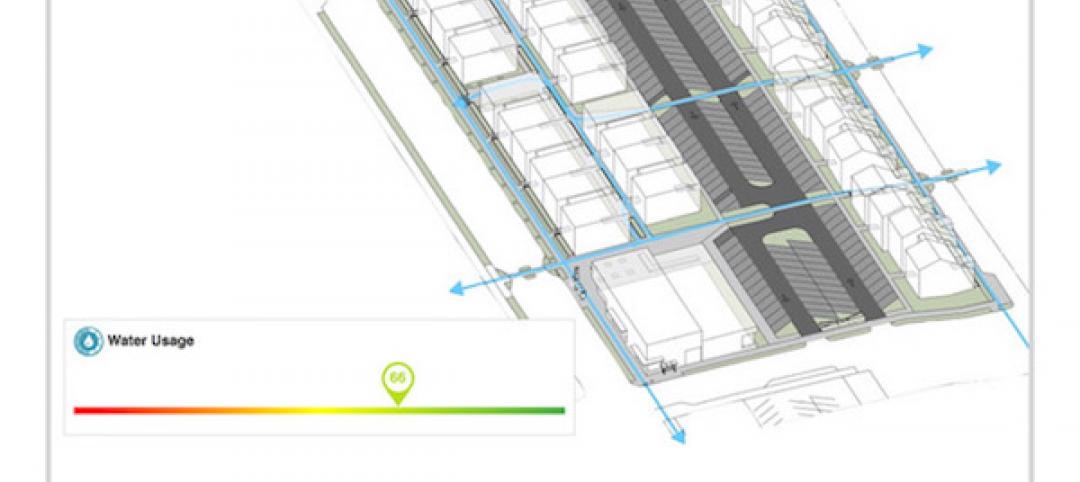If all goes as planned, Canada’s third-largest telecommunications company, Telus, next month will open what has been billed as one of the most energy-efficient data centers in the world. The $75 million, 215,000-sf facility, located in Kamloops, B.C., is projected to use up to 80% less power and 86% less water than a typical data center of its size. Its peak power utilization effectiveness (PUE)—the ratio of total energy used by the data center to the energy delivered to the computing equipment—is estimated at a minuscule 1.15.
The “secret sauce,” according to the facility’s contractor, Skanska, is a patented cooling technology, called eOPTI-TRAX, that replaces the traditional chiller plant. Together with its modular data center partner, Inertech, Skanska supplied the distributed, closed-loop system, which greatly expands the temperature range at which a facility can utilize outdoor air for “free” cooling. Telus’ Kamloops Internet Data Centre, for instance, will be able to use 100% outside air for cooling when temperatures are as high as 85°F—a huge improvement over the 45°F threshold typical with traditional chiller plant setups.
In lieu of underfloor air distribution, which requires numerous fans to push cold air toward the racks to cool the servers, the eOPTI-TRAX approach uses a contained hot- and cold-aisle design with optimized air circulation in the server aisles and liquid refrigerant coils lining the inside of the rear walls of the server rack to draw and absorb the heat. The scheme reduces hot-aisle temperatures from 160°F to just 75°F, according to Skanska.
The Telus project is among a handful of recently completed data centers that are raising the bar for energy and water efficiency. Building Teams are employing a range of creative solutions—from evaporative cooling to novel hot/cold-aisle configurations to heat recovery schemes—in an effort to slash energy and water demand. In addition, a growing number of data center developers are building facilities in cool, dry locations to take advantage of 100% outdoor air for cooling.
The National Center for Atmospheric Research’s new $70 million, 153,000-sf Wyoming Supercomputing Center in Cheyenne, for instance, uses the cool, dry air in combination with evaporative cooling towers to chill the supercomputers 96% of the year. Even when factoring the facility’s administrative offices, the building’s ultimate PUE is projected to be 1.10 or less, placing it in the top 1% of energy-efficient data centers worldwide. Where possible, the data center reuses waste heat for conditioning the office spaces and for melting snow and ice on the walkways and loading docks. Chilled beams provide efficient cooling in the administrative areas.
Facebook’s new model for data centers
While a temperate climate can be hugely advantageous for data center owners, it’s not a requirement for achieving a low PUE and WUE (water usage effectiveness), say data center design experts. Building Teams and technology providers continue to develop schemes that can operate efficiently at higher temperatures and relative humidity levels.
Take Facebook’s data center in Forest City, N.C., for example. Unlike the company’s other data center locations in Prineville, Ore., and Lulea, Sweden, the Forest City facility sits in a warm, humid climate—yet it has been able to achieve a PUE on par with the other installations, at 1.07, according to Daniel Lee, PE, Data Center Design Engineer at Facebook.
“Last summer, we had the second-hottest summer on record in Forest City and we didn’t have to use our DX system (direct expansion coils) system,” says Lee. “Although it was hot, with highs of 103°F, the relative humidity was low enough so that we could use the water (evaporative cooling) to cool the space.”
The trick, says Lee, is a simplified, holistic approach to data center design that optimizes not only the building mechanical systems, but also the computer hardware (servers and racks) and software applications—all with an eye toward reliability and energy efficiency. Traditional mechanical components—UFAD, chillers, cooling towers, etc.—are replaced with a highly efficient evaporative cooling scheme that uses 100% airside economization and hot-aisle containment. An open-rack server setup with exposed motherboards greatly reduces the energy required to cool the equipment. The result is a facility with fewer moving parts to break down that can operate efficiently at interior temperatures in excess of 85°F.
Facebook made waves in 2011 when it made public its design specs for its first in-house data center, in Prineville, under a program called the Open Compute Project. Modeled after open-source software communities, the program relies on crowd sourcing to share and improve on Facebook’s base data center scheme.
“We give the design away; you can take it and build it yourself,” says Chuck Goolsbee, Datacenter Site Manager at Facebook’s Prineville location. “All the components are there to build it in sort of a LEGO-like manner, from the building itself down to the servers.”
Facebook expects big things from the Open Compute Project. Many of the core component suppliers are involved—including Dell, Hewlett-Packard, Intel, and AMD—and thousands of data center experts have participated in engineering workshops and have given feedback to the group.
“Fifteen years from now, the DNA from Open Compute will be in every data center in the world,” says Goolsbee.
Related Stories
| May 24, 2017
Accelerate Live! talk: Applying machine learning to building design, Daniel Davis, WeWork
Daniel Davis offers a glimpse into the world at WeWork, and how his team is rethinking workplace design with the help of machine learning tools.
| May 24, 2017
Accelerate Live! talk: Learning from Silicon Valley - Using SaaS to automate AEC, Sean Parham, Aditazz
Sean Parham shares how Aditazz is shaking up the traditional design and construction approaches by applying lessons from the tech world.
| May 24, 2017
Accelerate Live! talk: The data-driven future for AEC, Nathan Miller, Proving Ground
In this 15-minute talk at BD+C’s Accelerate Live! (May 11, 2017, Chicago), Nathan Miller presents his vision of a data-driven future for the business of design.
Big Data | May 24, 2017
Data literacy: Your data-driven advantage starts with your people
All too often, the narrative of what it takes to be ‘data-driven’ focuses on methods for collecting, synthesizing, and visualizing data.
AEC Tech | May 23, 2017
A funny thing may happen on the way to AI
As AI proves safe, big business will want to reduce overhead.
Building Technology | May 5, 2017
Tips for designing and building with bathroom pods
Advancements in building technology and ongoing concerns about labor shortages make prefabrication options such as bathrooms pods primed for an awakening.
BIM and Information Technology | Apr 24, 2017
Reconciling design energy models with real world results
Clark Nexsen’s Brian Turner explores the benefits and challenges of energy modeling and discusses how design firms can implement standards for the highest possible accuracy.
BIM and Information Technology | Apr 17, 2017
BIM: What do owners want?
Now more than ever, owners are becoming extremely focused on leveraging BIM to deliver their projects.
Sustainable Design and Construction | Apr 5, 2017
A new app brings precision to designing a building for higher performance
PlanIt Impact's sustainability scoring is based on myriad government and research data.
BIM and Information Technology | Mar 28, 2017
Digital tools accelerated the design and renovation of one contractor’s new office building
One shortcut: sending shop drawings created from laser scans directly to a wood panel fabricator.













